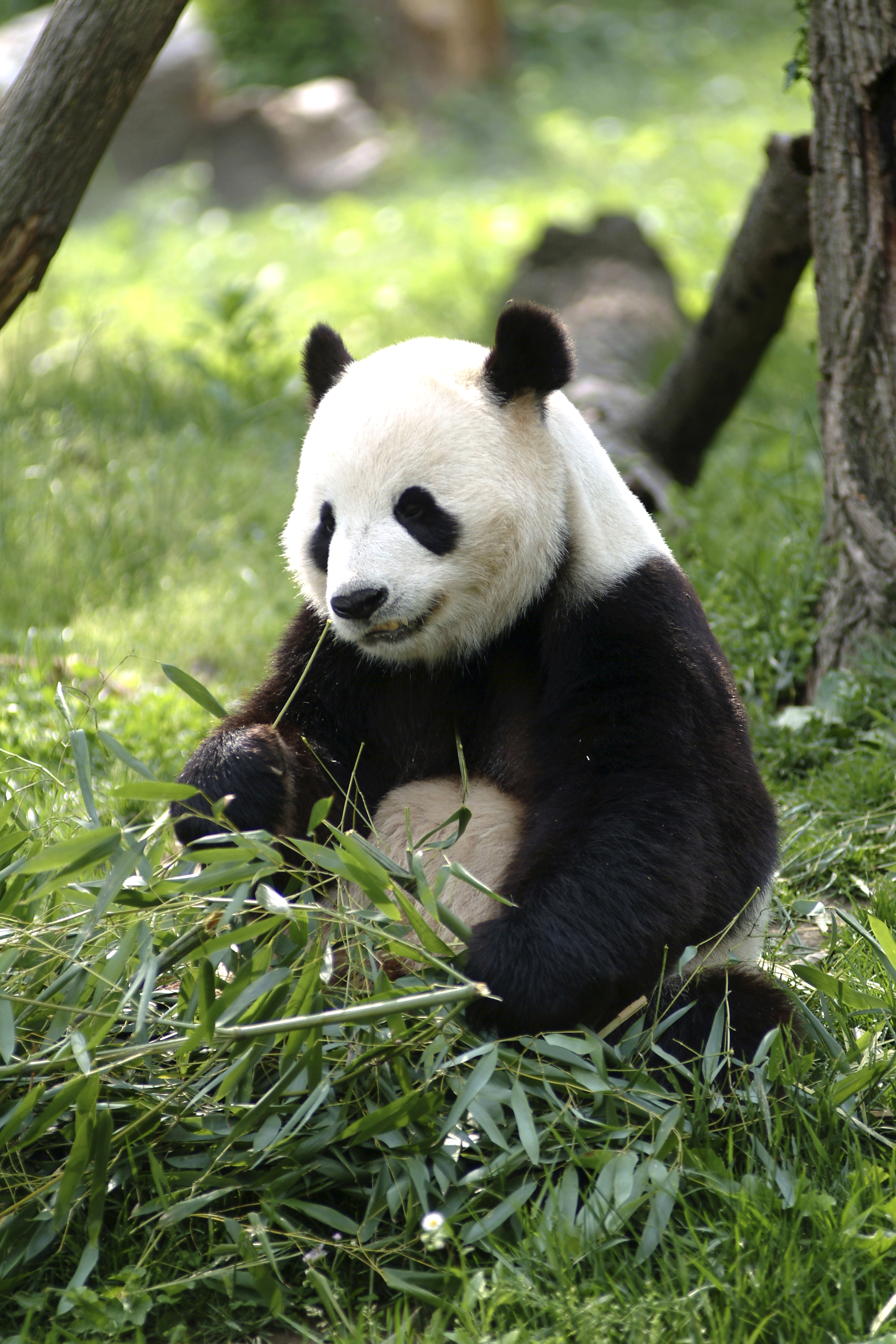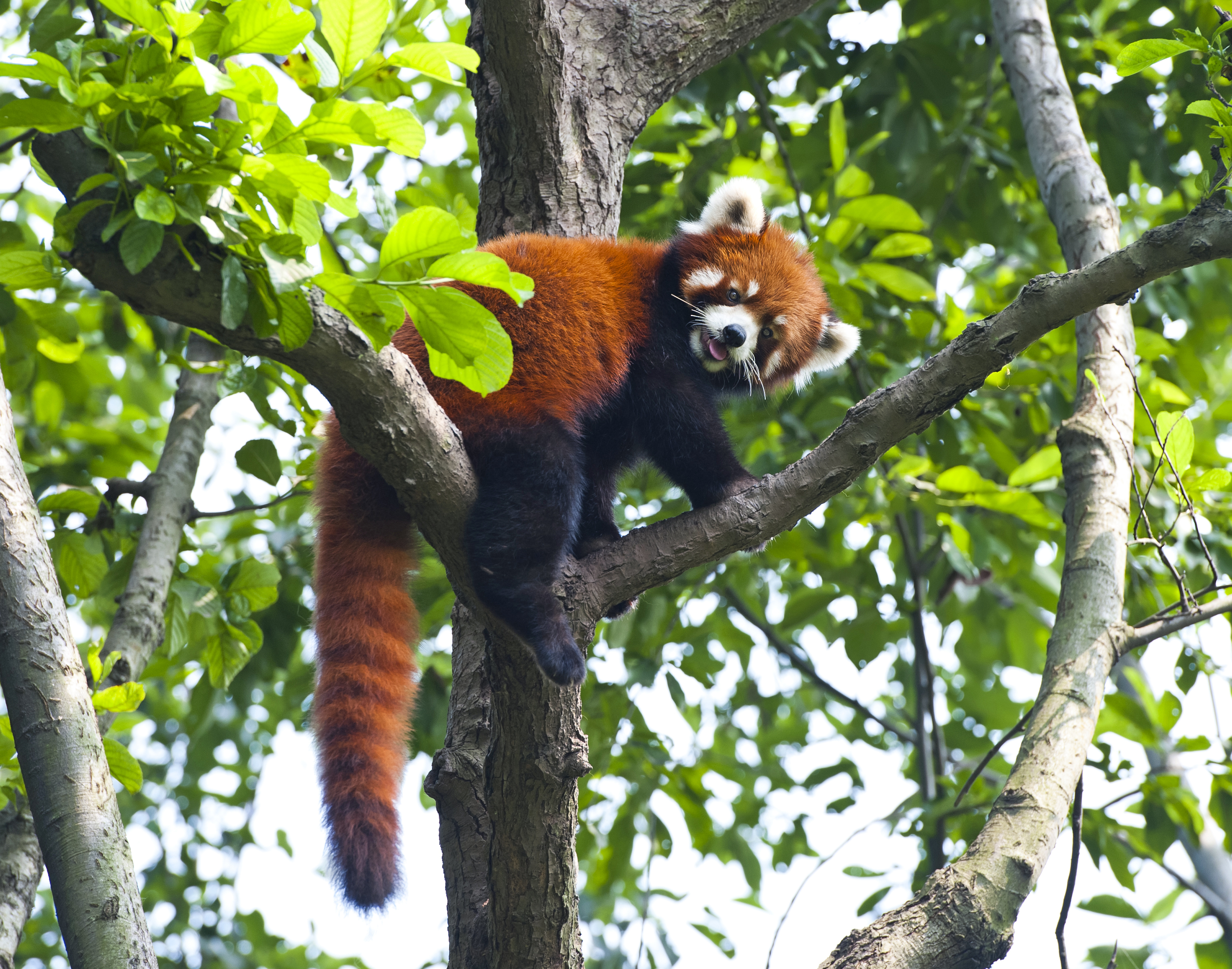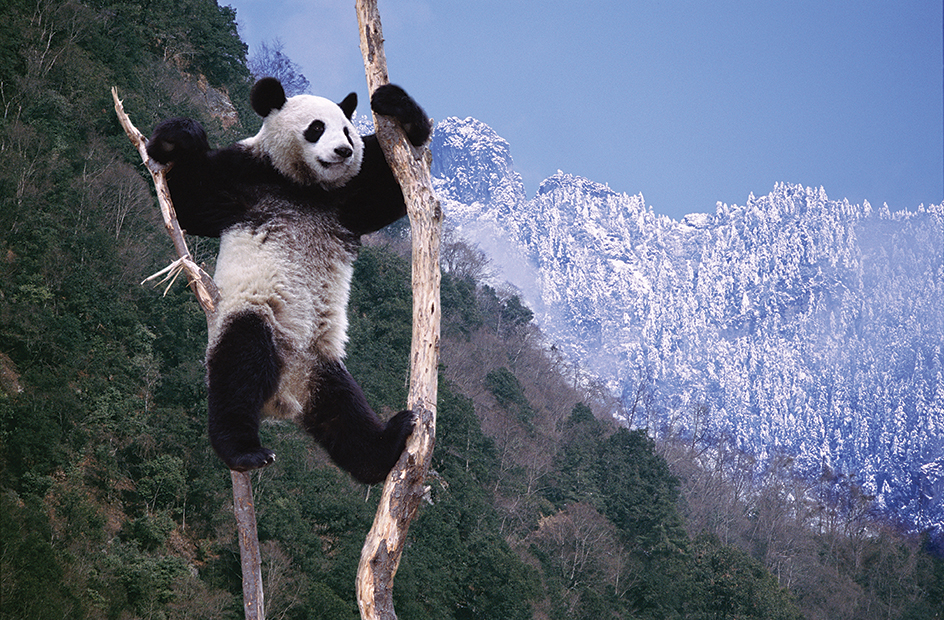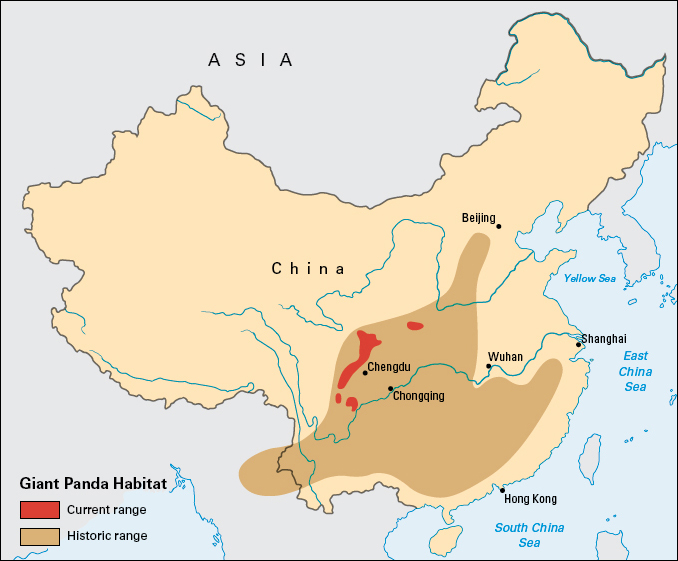Panda is the name of two Asian mammals that differ greatly in appearance. The giant panda is a large, black-and-white bear. The red panda, also called the lesser panda, is reddish-brown and much smaller. Both animals live in bamboo forests on upper mountain slopes. The giant panda lives in central China. The red panda lives in parts of Bhutan, China, India, Myanmar, and Nepal. Both species (kinds) of pandas are in danger of dying out completely. They are protected by national and international laws.
Pandas eat bamboo. The giant panda eats bamboo shoots as well as bamboo stems and leaves. The red panda eats bamboo leaves. Pandas grasp the bamboo between their fingers and an “extra thumb.” This thumb, which is a bone covered by a fleshy pad, grows from the wrist of each forepaw. Pandas also have true thumbs, which they use as fingers.
Loading the player...Pandas eating
Unlike most plant-eating animals, pandas have inefficient digestive systems that cannot easily change plants into food energy. As a result, pandas must eat large quantities of bamboo. For example, giant pandas eat as much as 85 pounds (39 kilograms) of bamboo shoots per day.
The giant panda
has a white, chubby body with black legs and a broad band of black across the shoulders. It also has a large, round head; small, black ears; and a white face with black patches around each eye. This panda commonly grows to about 5 to 6 feet (1.5 to 1.8 meters) long and has a short tail. Adults weigh about 200 to 300 pounds (90 to 140 kilograms).

The female giant panda gives birth every two or three years to one or two cubs. Panda cubs are extremely tiny, weighing only about 5 ounces (140 grams) at birth. The mother, who normally spends about 12 hours per day feeding, stays with the newborn cub for up to 10 days without feeding. Cubs normally nurse for about a year and may remain with the mother for more than two years.
The red panda
has long, soft fur, and a bushy tail with rings like that of a raccoon. This panda weighs from 6 to 12 pounds (2.7 to 5.4 kilograms) and grows to about 2 feet (61 centimeters) long, not including the tail. It has a pale face with a rusty-red streak that curves downward from each eye. A red panda climbs easily and sleeps in a tree most of the day. It searches for food at dawn and dusk. Red pandas are more likely than giant pandas to eat foods other than bamboo, such as fruits and berries.

Protecting pandas.
Widespread cutting of forests for wood and farmland in China has destroyed a large part of the habitat of giant pandas. China’s government has tried to protect these pandas by establishing reserves of bamboo-rich public land for them. The number of such reserves has greatly increased. China also has begun to create wildlife corridors. Wildlife corridors are continuous areas of wildlife that connect larger reserves. China also has banned logging in many areas, and it has made efforts to replant forests. However, research indicates that pandas prefer old-growth forests. Scientists estimate that fewer than 2,000 giant pandas remain in the wild. They estimate that fewer than 10,000 red pandas remain in the wild.

Other efforts to ensure the survival of giant pandas have focused on breeding them in zoos. Giant pandas proved extremely difficult to breed in captivity. After years of failed attempts, scientists have made great progress in breeding the animals. Zoos now hold more than 300 giant pandas. This number is considered the minimum needed to preserve giant pandas. Scientists are researching methods for introducing pandas that were born in captivity into the wild.

Classifying pandas.
Scientists long disagreed about how to classify pandas. Many characteristics of red pandas suggest that they are closely related to raccoons. These include fur markings and the ability to grasp objects with the front paws. Giant pandas also resemble raccoons in some respects. But they resemble bears in size, body shape, and general appearance. These differences caused scientists to debate whether the two kinds of pandas are closely related. Researchers have studied the hereditary material of pandas to help them understand how the animals should be classified. These studies confirm that giant pandas are closely related to other bears. The hereditary material of red pandas shows that they are somewhat related to skunks, raccoons, and weasels. However, they are not closely related to any living species.
